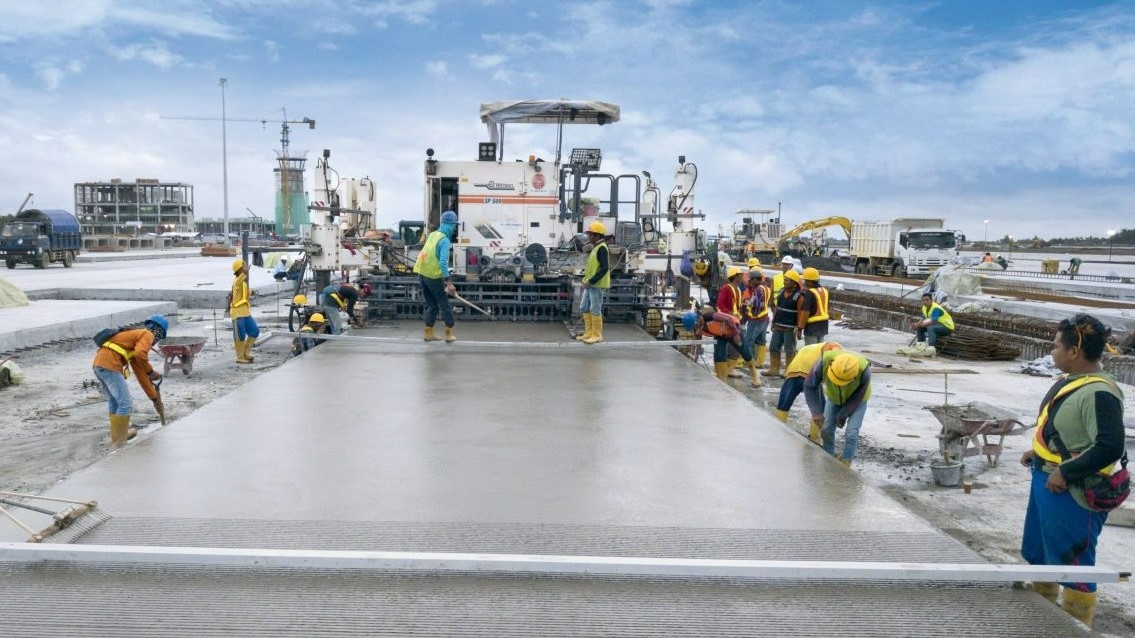
Concrete pavements are being used to deliver a long road life and low maintenance on very high traffic routes overseas, but not in New Zealand.
Inside Resources takes a look at why New Zealand is failing to follow the international trend, and if there is any chance of a turn around.
The New Zealand transport agency, Waka Kotahi, says there’s nothing to stop a bidder on a roading tender proposing a concrete road.
“Concrete pavements are currently able to be adopted in designs that are required to meet the Waka Kotahi design standards in these cases,” lead advisor pavements Adam Leslie says.
For very high traffic volumes, concrete pavements can be economic, especially when discount rates are low, he says.
“In these instances, if a supplier were to put forward a concrete pavement option, then this would be considered.”
Waka Kotahi guidance
One issue front of mind for the New Zealand cement and concrete industry body is the lack of a detailed concrete road specification.
Waka Kotahi’s New Zealand guide to pavement structural design (2018) contains a short, general description of a continuously reinforced concrete road.
This is a much newer technology than, say, the M25 ring road in London, overdue for replacement because 30 years on, it has become a set of clunky and noisy short sections of concrete.
The guide is not encouraging of concrete road construction here.
“There are a number of requirements to consider including the current need to surface with open-graded porous asphalt (OGPA), which reduces the economic benefits, and that modern concrete pavement construction is a new technique not yet trialled in New Zealand.”
Are concrete roads noisy?
The point of OGPA, among other benefits, is to reduce traffic noise, noting that Concrete NZ’s case for concrete roads does not discuss noise.
A 2006 research paper published in Proceedings of Acoustics compared different pavement types in New South Wales. It says “a range of low-noise asphalts were found to return the lowest overall noise levels followed by concrete pavements that had minimal surface texture”.
On this topic, Concrete New Zealand chief executive Rob Gaimster says the noise issue is now mitigated by diamond grinding and grooving.
So, noise is not an issue, and placing OGPA on top of a concrete road appears to be pointless.
Overcoming barriers to entry
Soundings taken with the roading sector suggest: the high upfront capital cost of building a concrete road, large sunk investments in flexible pavement and asphalt technologies, and the lack of concrete paving trains in New Zealand are strong disincentives to concrete roads.
Concrete NZ notes the barriers and has been seeking to ease the technology transition with its website content on concrete roads.
Gaimster says if the Government is serious about lowering the whole-of-life carbon footprint of roading, concrete roads need to be in the frame.
He has been pushing for Government support for a trial of a section of concrete road in New Zealand, most recently as part of developing a decarbonisation road map for the cement and concrete sector.
The analogy is Energy Efficiency and Conservation Authority co-investment in private projects to convert coal-fired industrial boilers to renewable energy.
The most likely candidates for trialling a concrete road in New Zealand would be roading contractors active in New Zealand with existing experience in the field overseas.
An example is HEB Construction, part of the VINCI Group which has concrete roading technology operating in Australia.
Seismic risk
A traffic engineer Inside Resources has spoken to says a further barrier to local roading contractors investing in concrete paving technology is seismic risk.
No matter how strong a concrete road is, an earthquake could still crack it, he says. Weigh this risk against the high upfront capital cost of a concrete road, and the 40-year life of the road, and the business case starts to look shaky.
Cement-modified pavement research
Waka Kotahi’s Canterbury Accelerated Pavement Testing Indoor Facility (CAPTIF) has completed testing on cement-modified basecourse and waterproof membranes or layers.
This found that a treatment of 4 litres of bitumen per square metre laid as a series of chipseal layers is only marginally less effective than a dense asphaltic concrete layer.
Leslie says cracking in the top of the cement-modified basecourse is the ultimate reason water enters the basecourse, in reference to instances where this has happened on roading projects.
In another test, “using cement-modified pavements appeared to make little difference to the risk of early failure in wet conditions when compared to unbound pavements. The unbound pavements performed in a similar manner, however, they do rut more slowly.”
While there is no specification for concrete pavement, Waka Kotahi’s guide does note that a draft specification for Hi-Lab (high-strength, low-fines aggregate base) is available for this cement-modified basecourse.
The research suggests an ongoing role for cement in pavements, with technology improvements, even if the concrete sector’s goal of a concrete road trial remains elusive at this time.
Reproduced with permission of Bernie Napp, editor of Inside Resources. First published Friday 11 February.